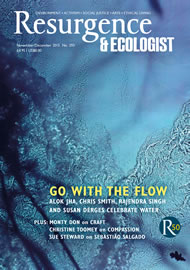Ken Robinson’s 2006 TED lecture, Do Schools Kill Creativity?, sent shock waves round the educational world and beyond, and has been viewed by millions of people. Robinson is what might be called an educational revolutionary – the politically correct term is ‘change maker’ – and his excoriating critique of the factory model of education resonated with the hopes of many teachers in Britain a decade ago that a new paradigm for education might be at hand.
In the last five years, however, those hopes have been dashed. The former coalition government’s ‘Govean Revolution’ has effectively crushed innovations in teaching and learning through the threat of Ofsted – the inspectorial arm of the government – and the prospect of failing to reach the ‘standards’ deemed necessary for the UK to compete successfully in the global marketplace. In order to squeeze out a minuscule improvement in grades, schools are alienating many young people and denying them their natural desire to realise themselves as creative human beings through dance, music, art and drama.
This inspiring new book attacks the deadening effect of government policies in both the US and the UK, and shows us through argument and example how these policies might be overcome by schools transforming themselves into engines of creativity.
Robinson has a long history as a champion of the arts in schools over the past 40 years. He led the Arts in Schools Project in the 1980s, which involved 2,000 UK teachers and artists and is still remembered today. Its success, as he says in this book, was the outcome of working directly with teachers in their own classrooms to transform their practice rather than recommending changes and then expecting teachers and schools to carry them out. It is this grass-roots approach to transformation that empowers teachers and students to change.
Creativity is not, however, confined only to the arts. Robinson’s report for the Department of Education in 1999, All Our Futures: Creativity, Culture and Education, looked at the school curriculum as a whole, defining creativity as the process of having original ideas that have value. Creativity is “putting your imagination to work”, and is possible in all areas of human life.
How can schools cultivate the imagination by empowering all children to put their individual imaginations to work creatively? Robinson gives many examples of creative schools in this book, and this may go towards answering this question. He has lived in California since 2001, so most of them are American. They range from schools such as Boston Arts Academy, where the curriculum and pedagogy are wholly integrated with the arts, to High Tech High in San Diego – an example of the creative use of technology – and The MET in Providence, Rhode Island, where “the city is school”.
Such schools – and there are many more – are creating new definitions of what is meant by ‘school’ and are experimenting with radical new ways of teaching and learning made possible by recent advances in technology. Underpinning the changes he so vividly describes is what for Robinson is the heart of education. This is the relationship between the student and the teacher: everything else depends on how productive and successful that relationship is. The root task of the school, therefore, is to create the conditions in which this relationship can flourish: these conditions are best found in small, personalised school communities.
Robinson has faith that schools can become places of creativity in the fullest sense and help to release the energy, talent and goodwill of their students. Creative Schools gives us a vision of how this might happen.








